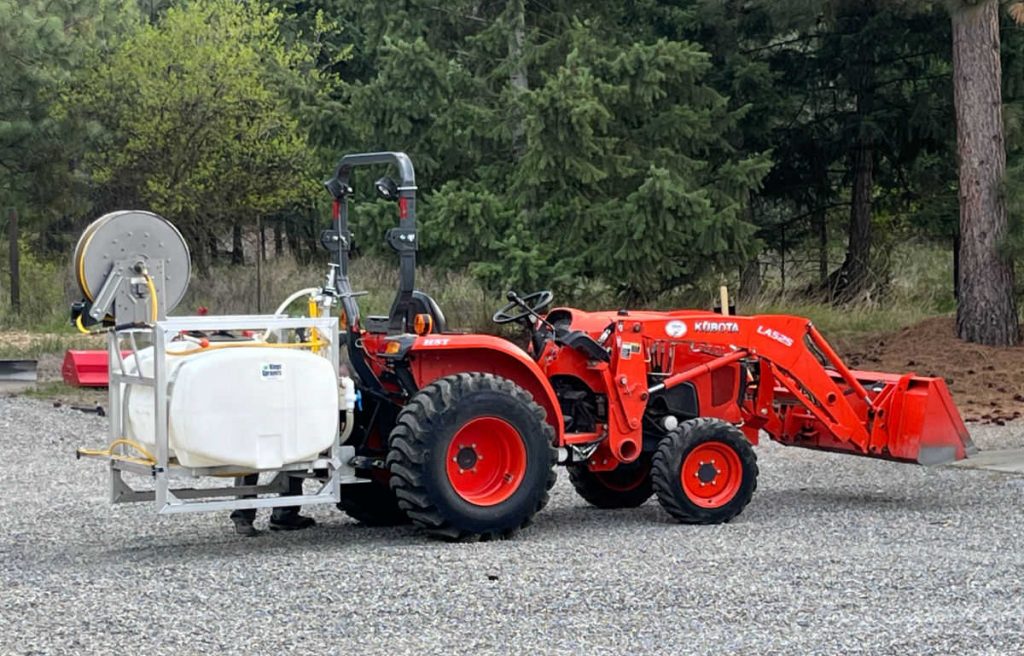Bark Beetles are early in 2024! Now What?
A few days ago, I cut down some Ponderosa Pines on my property, believing I was still well within the timeframe before the adult bark beetles emerge and begin to look for host trees to bore and lay eggs into. My regular schedule is to spray the trees in May to protect them, with April being the last month to safely thin and cut trees.
Nope. The fresh cuts attracted swarms of beetles, who apparently neglected to consult the calender, and hatched weeks before I expected their attack here in the Saltese region. Time to bring out the sprayer!
I have a commercial-grade setup for my sprayer, so I can apply insecticide all the way to the tops of the trees. But you don’t have to have a big one like this–any sprayer that will get to at least the middle of your trees will help. The key is to spray as high as you can, get all sides of the tree, and spray until it is dripping. I have details on what insecticide I use and how to apply insecticide for bark beetles on my Bark Beetles page.

On the alert for bark beetles
Having successfully repelled bark beetles for the last couple of years, I know that besides spraying while beetles are still in the larva stage, the best way to prevent them is to keep my trees healthy. This includes thinning out any trees that are too close together, watching for disease, and any other signs of distress. Bark beetles are attracted to stressed trees (including newly cut trees, which brought them to me this week).
I’m confident my spraying will be the most important thing I can do now, but I’ll also be on the lookout for signs of bark beetle in my trees through the rest of spring, summer, and fall.
Leave a Reply